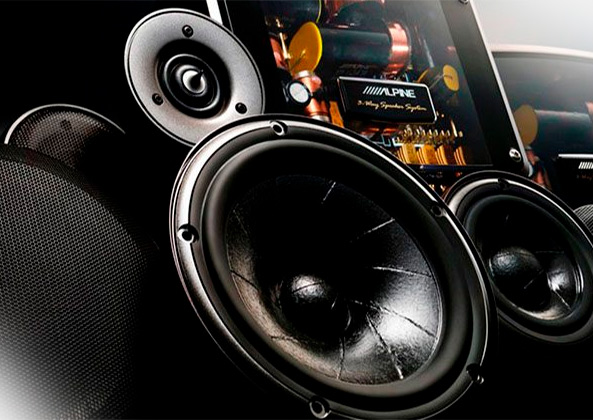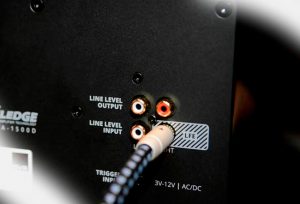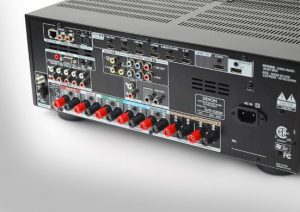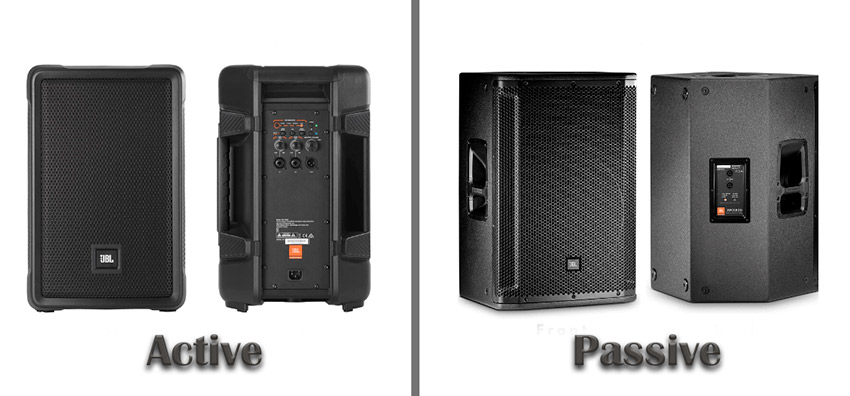So, you’ve got a set of passive speakers that literally can’t make a sound on their own. But, you also have an output amplifier that’s going to feed them with all the power they need. But what about your active subwoofer, you might ask? Can it “join the club” and work both with the amp and the non-powered speakers? Or maybe it requires an additional device to reroute everything?
I’ve got good news: you won’t have to invest in any expensive extras. No tools, equipment, or gadgets to make this work. It can all be done via regular cables, and we’ll talk about that in more detail further down this review. On top of that, we’ll figure out the difference between powered and passive subwoofers, speakers, what benefits they each have, and more!
Table of Contents
Difference between Passive and Powered Subwoofers

However, powered systems are usually pretty expensive, and subwoofers aren’t an exception to that rule. And one more thing: while the sound quality will be more than decent, if you’re a true audiophile, I bet you’ll like what a standalone amplifier brings to the table. Yes, with a passive subwoofer (which will cost less than a powered one), you’ll have to always pack an extra device (the amp), but, again, the premium audio quality will be worth it.
Passive and Active Speakers – What’s the Deal?
Pretty much everything I just said about subwoofers applies to speakers as well. Just like subs, the majority of speakers are active. Plus, they usually come packed with a subwoofer, in a 2 + 1 setup (two speakers and one woofer). The difference in price, audio quality, and flexibility are literally the same, with only minor exceptions. Now, I want to say real quick that if you’re a professional DJ, passive speakers should be the obvious choice.
The reason – with the right amp, you’ll always be in control of how your setup sounds. Besides, no active speaker pair can challenge an output amplifier in terms of fidelity, unless the speakers are very expensive. And remember: since powered speakers come with built-in amplifiers, that leaves little space for the driver (the part that’s responsible for generating sounds). Bigger drivers equal a brighter, better sound. Keep that in mind the next time you’re out shopping.
Getting Started
As I already mentioned in the beginning, for this to work, you won’t have to buy any additional stuff. All you’ll need to do is follow my instructions carefully and make sure you plug the right wires/cables into the right inputs/ports. The following list includes the most reliable and tried-and-true ways of making a powered sub work along a set of passive speakers. Let’s go ahead and check them all out.
Method #1: Using the Stereo RCA Interface

They can carry both audio and video signals, by the way, and usually come in a pair. That allows them to create a stereo signal (instead of mono). So, you’ll see paired RCA connectors on the powered subwoofer. RCA cables are available for cheap and have a very decent audio quality. That means you can just plug them into the sub, and set up a connection that way.
A quick note: the speakers won’t be able to make a sound unless the sub is connected to an amp! This is a universal rule for all passive speakers – they can only be powered by an amplifier.
Method #2: the LFE Speaker Output
LFE stands for low-frequency effects. It was specifically designed to accurately transmit the subwoofer’s low-frequency tones (makes sense, since the woofer is responsible for the bass). Now, what you need to understand is that while this isn’t a mono interface, you still won’t get the same wide stereo image as with, say, RCA. The LFE is one single cable, not a pair, and for bass (which is always mono), that’s more than enough.
So, I’d only recommend using this method if you don’t have any other options. That’s because the audio quality of the passive speakers will take a hit when connected through LFE.
Method #3: XLRs
If both the speakers and the subwoofer support the jack cables, that will be a better solution. In fact, 3.5mm jacks (also known as the XLR cables) are considered to be superior even to RCA – they deliver greater quality. But, again, both devices will have to support it for this to work. If your equipment isn’t very old, then I bet they’ll include jack connections and cables.
Why not Route everything Through the Amp?

Some engineers even put a compressor or a sonic maximizer into the chain. The reason: the amp might not have enough inputs and outputs; or, it will have lots of connection options, but not the ones that you need. In this situation, you’ll have to make sure that the extra devices or equipment don’t “color” the audio in any way.
Conclusion
And that concludes my guide into the world of powered subs and passive speakers! Once you figure out the difference between active/passive speakers and subwoofers, it will be much easier to connect them. There’s nothing hard about this, especially if you follow my guide and don’t rush it. As we learned today, active subwoofers can, indeed, be used in a combination with non-active speakers.
In fact, there’s more than one way to do that. So, it’s actually up to you to decide how to do this. If you still have some questions about the topic, feel free to ask away! I’ll make sure to get back to you as soon as possible. And if you’re an experienced pro and know your way around audio equipment, please, share your experience and tips/tricks in the comments!




Leave a Reply